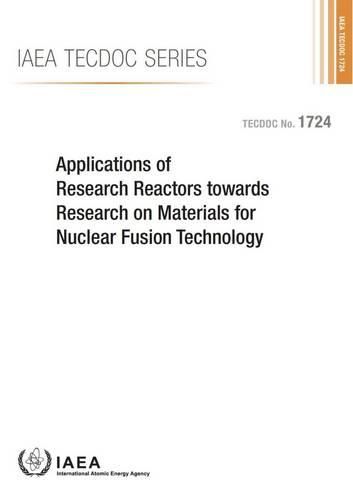Applications of research reactors towards research on materials for nuclear fusion technology: proceedings of a technical meeting held in Vienna, 27-29 June 201
International Atomic Energy Agency

Applications of research reactors towards research on materials for nuclear fusion technology: proceedings of a technical meeting held in Vienna, 27-29 June 201
International Atomic Energy Agency
Controlled nuclear fusion is widely considered to represent a nearly unlimited source of energy. Recent progress in the quest for fusion energy includes the design and current construction of the International Thermonuclear Experimental Reactor (ITER), for which a licence has recently been obtained as a first of its kind fusion nuclear installation. ITER is designed to demonstrate the scientific and technological feasibility of fusion energy production in excess of 500 MW for several consecutive minutes. ITER, however, will not be able to address all the nuclear fusion technology issues associated with the design, construction and operation of a commercial fusion power plant. The demonstration of an adequate tritium or fuel breeding ratio, as well as the development, characterisation and testing of structural and functional materials in an integrated nuclear fusion environment, areexamples of issues for which ITER is unable to deliver complete answers. To fill this knowledge gap, several facilities are being discussed, such as the International Fusion Materials Irradiation Facility and, eventually, a fusion demonstration power plant (DEMO). However, for these facilities, a vast body of preliminary research remains to be performed, for instance, concerning the preselection and testing of suitable materials able to withstand thehigh temperature and pressure, and intense radiation environment of a fusion reactor. Given their capacity for material testing in terms of available intense neutron fluxes, dedicated irradiation facilities and post-irradiation examination laboratories, high flux research reactors or material test reactors (MTRs) will play an indispensable role in the development of fusion technology. Moreover, research reactors have already achieved an esteemed legacy in the understanding of material properties and behaviour, and the knowledge gained from experiments in fission materials in certain cases can be applied to fusion systems, particularly those of materials under development for Generation IV concepts.
This item is not currently in-stock. It can be ordered online and is expected to ship in approx 4 weeks
Our stock data is updated periodically, and availability may change throughout the day for in-demand items. Please call the relevant shop for the most current stock information. Prices are subject to change without notice.
Sign in or become a Readings Member to add this title to a wishlist.


